Air defense during the Second World War. British heavy anti-aircraft gun QF 3.7
Among other things that the pandemic has brought us, I want to note one positive (for me) phenomenon - a huge amount of free time. For a person, self-sufficient free time, like money, does not happen much.
Of course, this is to the detriment of many necessary and important matters, but since it so happened, it was necessary to derive benefit from this situation. For almost two years, I managed to do a lot of things that my hands simply did not reach at normal times.
Among other things, I disassembled and put in some order a personal archivist. This is what I call him affectionately. His wife does not love him and calls him names in every way. I understand her, who might like a bunch of totally anarchist-looking folders taking up space and collecting dust. For more than forty years I confidently held the defense, and last year I surrendered. I bought myself a good scanner, several external disks for a couple of terabytes, a little something else and started digitizing the materials I have. It's not easy, painstaking and takes a lot of time, because you want to review and re-read all the materials on the way ...
So, examining and sorting the images in the conventional section "Artillery", I collected a number of photographs of one amusing weapon.
Upon closer inspection, it turned out to be a British 94mm QF 3.7 heavy anti-aircraft gun.
I want to tell you a little about her.
QF 3.7 is practically unknown to the Russian reader, since it was not supplied by Britain for the USSR under Lend-Lease, and captured somewhere in some quantity by the Germans in the form of trophies, did not fight on the Eastern Front, but it served very well in Britain in defending London from bombing and shelling "Fau", fought in the armies and was simply in service in more than fifteen countries around the world.
In addition, it was installed on one of the squares of my city in memory of the inhabitants who died during the war for independence in 1947-1949. Her photo is used as a splash screen at the beginning of the article.
All images in the article were either taken by me in various cities and museums around the world, or taken from the Wikipedia media warehouse, the Flikr free images resource and the like, unless otherwise stated.
It should be noted here that I am not at all a Level 80 Artillery Specialist. Well, I distinguish a howitzer from an anti-aircraft gun, I recognize half a dozen artillery installations from different countries and peoples by sight. I am a simple lover of military equipment. At any opportunity I visit military museums in all countries where I just find myself, I am interested in military equipment displayed in the form of memorials and memorial signs in the squares and streets of different cities, I look at thematic illustrated literature, etc.
Accordingly, I cannot pretend to be complete, and such an article is published only in the "Opinions" section.
During World War I aviation received a rapid natural development and, consequently, the participating countries began to create means of dealing with it.
Great Britain entered the First World War without any ground anti-aircraft artillery. The capture of Belgium and northeastern France by Germany dispelled all doubts that key targets in England could be attacked from the air by aircraft and combat airships built by Count Zeppelin.
The military department could not find a single ground weapon that could be used to organize air defense.
While some countries tried to adapt existing artillery systems to the needs of the nascent air defense, Britain came to grips with a new type of artillery - anti-aircraft guns. Prior to World War I, the Royal Navy was the only service that considered defending against air attack and developed a 3-inch high-angle cannon.
It was based on the pre-war 3-inch (76-mm) naval Vickers QF cannon with modifications made by artillery engineers on behalf of the War Department in 1914. These included the use of a vertically sliding breechblock to allow for semi-automatic operation.
As a result, the army adopted the 76 mm QF 3-inch 20 cwt anti-aircraft gun, which has become the most common type of anti-aircraft artillery.
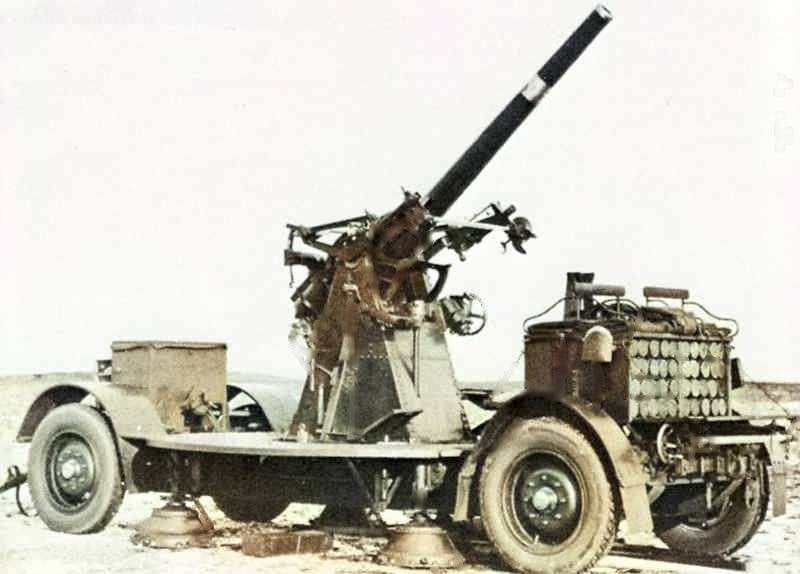
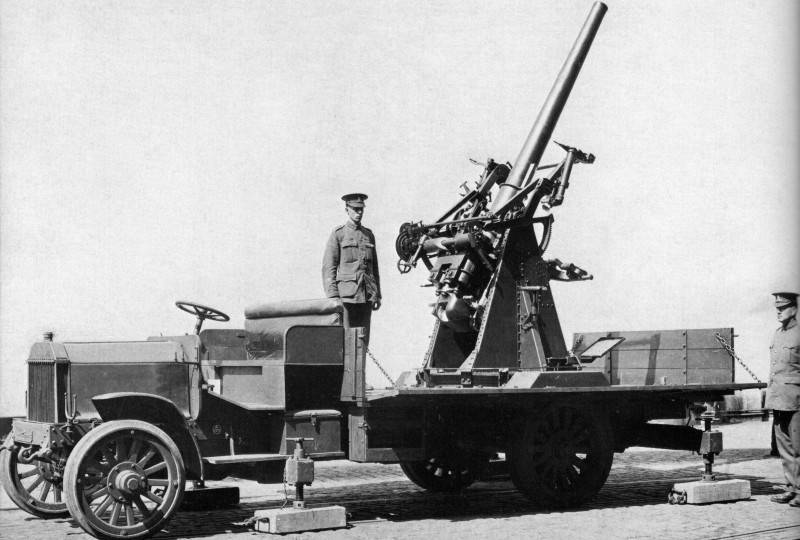
Shortly before the end of the war, a more advanced 90-mm anti-aircraft gun was supposed to enter service, but due to the end of the war, the newest for those times weapon was not put into production.
After the war, all anti-aircraft guns, except for the three-inch ones, were disposed of.
The war clearly demonstrated the capabilities of military aviation and the threat of air strikes, so the lessons were learned. In 1922, the British resumed the formation of anti-aircraft artillery, which began to operate, using the rich experience gained from the previous war. In 1925, the RAF established a new Air Defense Command of Great Britain, and all anti-aircraft units of the Royal Artillery were transferred under its command.
In 1925, a special "Anti-aircraft artillery textbook" was published, in which recommendations were given on the best modern methods of using heavy anti-aircraft guns.
In 1928, the tactical and technical requirements for a new 94-mm (3,7-inch) cannon were approved, which was supposed to fire at air targets with 11-kg shells with a ceiling of 8 m.However, due to financial difficulties, the project was slowed down several years, and subsequently the requirements were increased. The cannon was supposed to fire 500-kg shells with an initial muzzle velocity of 13 m / s at a target flight altitude of up to 910 m, move along the roads at a speed of 11 km / h, and the time for putting on alert should not exceed 000 minutes.
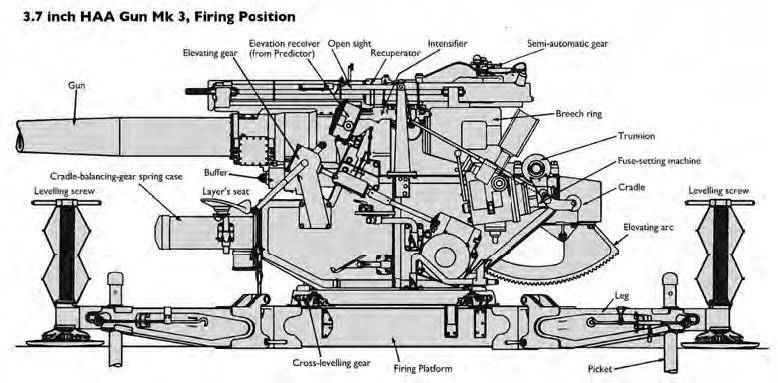
In 1934, Vickers-Armstrongs developed a prototype of an anti-aircraft gun, which was selected by a competition committee of air defense specialists, and in 1936 it passed acceptance tests. However, the system did not fully meet the original requirements: the weight exceeded a certain norm, the muzzle velocity was not achieved, and it took several more years to improve it. Only in 1937, the QF 3.7 cannon was put into mass production.
Two versions of the gun were released.
One is a mobile structure for use by batteries in the active army. It consisted of a wheeled cart (Carriage Mk I or Mk III) with four fold-down wheel bearings and leveling jacks. The wheels were lifted off the ground or removed when the gun was put into action.
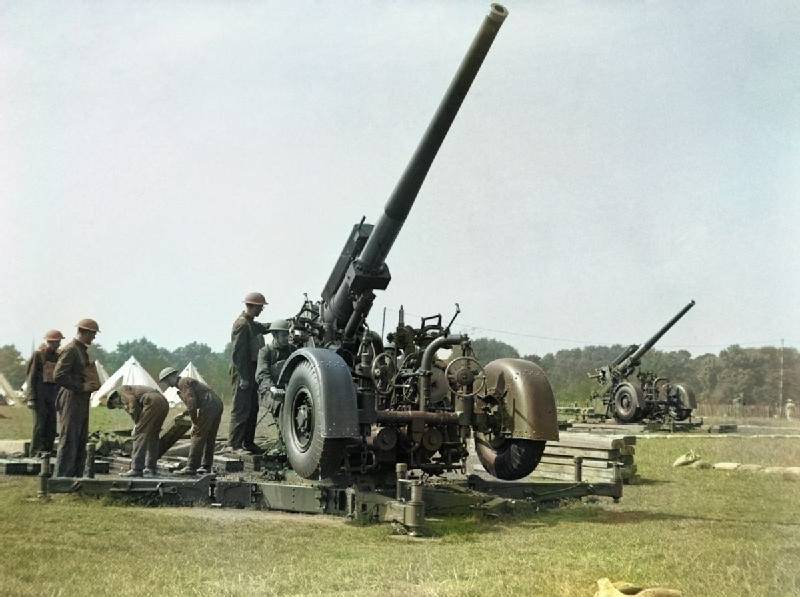
Another version could be used permanently. The carriage had a pedestal that was attached to a solid concrete foundation.
In 1944, it was decided that the base, constructed from railway sleepers and rails, was perfectly suitable for stationary implements, making them much easier to re-deploy without the cost and delays of building new concrete foundations. They were known as Pyle platforms in honor of General Frederick Alfred Pyle, head of the Air Defense Command.
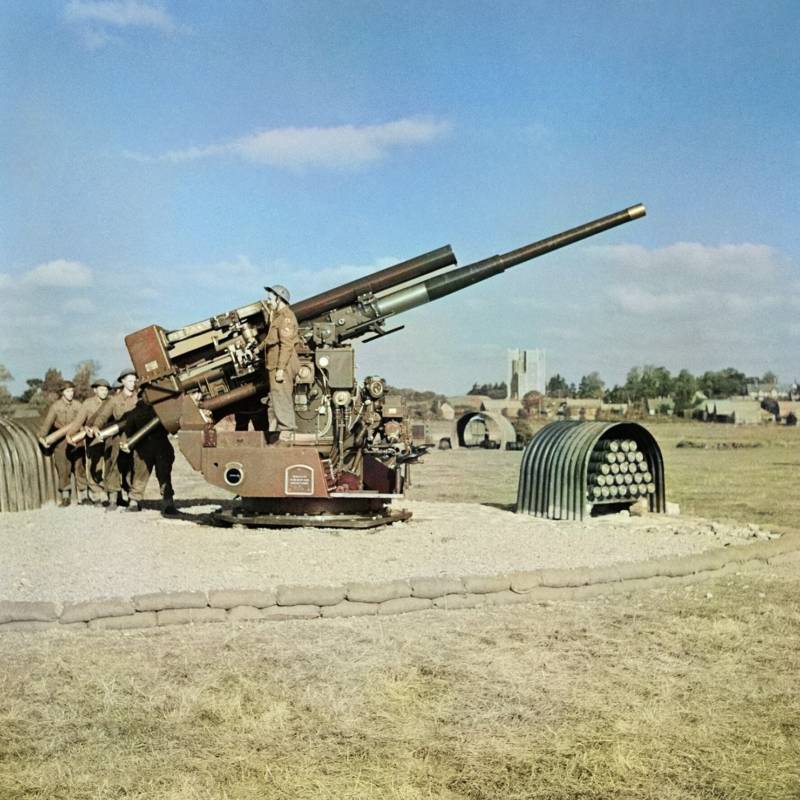
Stationary 3,7-inch cannon, 127th Heavy Anti-Aircraft Regiment, mounted on Pyle's platform in Orford, Suffolk, October 1944.
Both versions could be deployed 360 ° with an elevation angle of up to 80 °. In total, six modifications of the artillery gun and several modifications of the gun carriage for both variants were produced.
Main tactical and technical characteristics:
Caliber: 3,7 inches (94 mm)
Length: 185 inches (4,7 m)
Weight: 20 pounds (541 kg)
Projectile weight: 28 pounds (12,6 kg)
Rate of Fire: 20 shots / min
Initial projectile speed: 792 m / s
Recoil device: hydropneumatic
Max. range: 18 800 m
Effective range in height: 9 m
Vertical angle: -5 ° - 80 °
Horizontal angle: 360 °
Length: 8 687 mm
Width: 2 mm
Height: 2 502 mm.
The gun was controlled by a crew of seven people.
Modifications:
Mark I is the basic mobile version.
Mark II - a stationary (and mobile) version, in addition to the UK, was also produced in Canada and Australia under the designations 3.7-Inch Anti-Aircraft Mark II C and 3.7-Inch Anti-Aircraft Mark II A, respectively.
Mark III - started out as a combination of an Mk I breech with an Mk II barrel, a modernized version with an automatic charger and fuse timing (produced since 1943).
Mark IV - a prototype equipped with a gun carriage from the QF 4,5-inch Mark V naval cannon was not accepted into service.
Mark V is another prototype developed in parallel with the Mark IV. It was not adopted for service.
Mark VI, a transitional model to a new caliber, equipped with a 5,25 inch naval cannon. Due to its size, it was used only as a stationary anti-aircraft gun. In production since 1944, was in service until 1959.
For the QF 3.7 gun, high-explosive and fragmentation shells were used, both were supplied with fuses with retarders. Fuse No. 199 was powder (with a remote tube) with a maximum operating time of 30 seconds. Fuses No. 106 and 107 - mechanical with time delay; both were unsatisfactory. The standard fuse was a mechanical fuse No. 208 with a maximum operating time of 43 seconds.
The next stage, leading to an increase in accuracy and rate of fire, was the introduction of a computing device designed to automatically target anti-aircraft guns - an anti-aircraft artillery fire control device (PUAZO).
It was the most sophisticated mechanical calculator Predictor Vickers No. 1 Mk III, which made it possible to determine the gun pointing angles based on data on the position and movement of the target, ballistic parameters of the gun and ammunition, as well as wind speed and other external conditions. The resulting guidance angles were automatically transmitted to the gun guidance mechanisms using servomotors. Such pre-digital "computers" could weigh up to 1,5 tons and consist of about 3 parts.
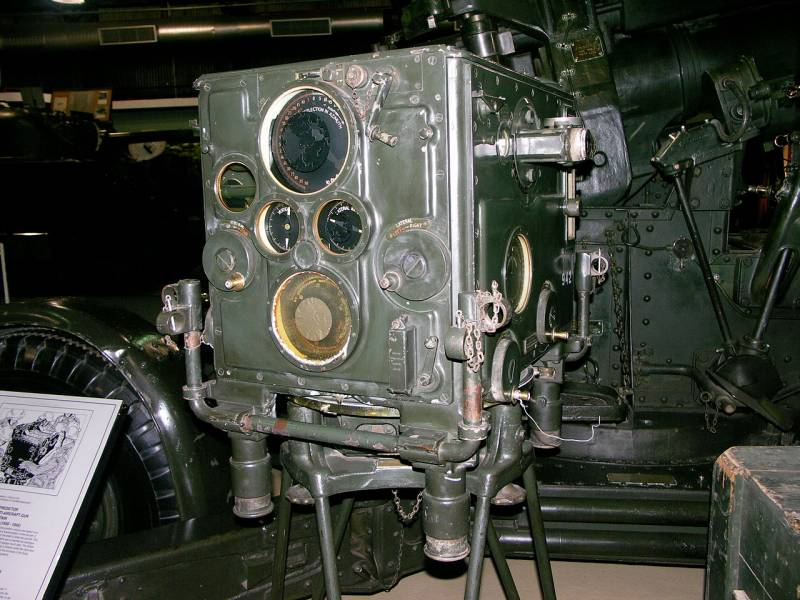
The Number 1 Mark III Predictor was used with the QF 3.7 inch anti-aircraft gun. South African National Military Museum stories, Johannesburg
Operators kept it pointed directly at where the target is now, and then the Predictor automatically calculated the correct lead point and displayed it as a pointer mounted on the weapon. The gun crew simply followed the pointer and loaded the shells.
A video about how the Predictor works.
A big improvement was the combination of PUAZO with a device for adjusting the fuse time - an automatic programmer MFS No. 11 from Molins, in which the fuse installation device was combined with a loading mechanism to increase the rate of fire.
The device for setting the fuse in the army slang was called "pig's ear".
A video about the British air defense artillery. At the sixth minute we are interested in QF 3.7, and somewhere in the seventh minute the work with the "pig's ear" is shown.
The whole complex of systems and devices allowed these guns to quite successfully fight against German aircraft-shells "V".
A number of sources contain information about the use of this weapon against tanks... The power of the shells was quite adequate, but the gun was too heavy to be used on the front line, and the available standard sights were not designed for direct fire.
A special anti-tank version of the 3,7-inch QF 32Pdr cannon was even designed and prototyped. Post-war tests showed that it can penetrate 200 mm of sloped armor. Tests against PzKpfw V Panther tanks showed reliable penetration at 950 yards (868 m), with four of the five shells dealing damage at 1 yards (350 m). Development ceased after the war, as other artillery systems offered similar capabilities.
Britain also developed the Tortoise heavy assault tank, the Turtle (A39), but it never went into series production. An attempt was made for him to adapt the QF 3.7. By the end of the war, only a few prototypes of the Tortoise had been built. After the completion of the tests, one was left for conservation, and the rest were disposed of.
Large-caliber anti-aircraft guns have long passed into the category of rarities. Densely adopted by all countries at the end of the 50s of the last century, anti-aircraft missile systems quite easily replaced them.
We can only thank the museum workers from different countries, who by their work maintain such interesting exhibits in a quite decent condition.
Sources:
Hogg, Ian V. 1998. "Allied Artillery of World War One" Malborough: The Crowood Press.
Routledge, Brigadier NW. 1994. History of the Royal Regiment of Artillery - Anti-Aircraft Artillery 1914–55. London: Brassey's
Campbell, John (1985). Naval Weapons of World War II. Annapolis, Maryland: Naval Institute Press
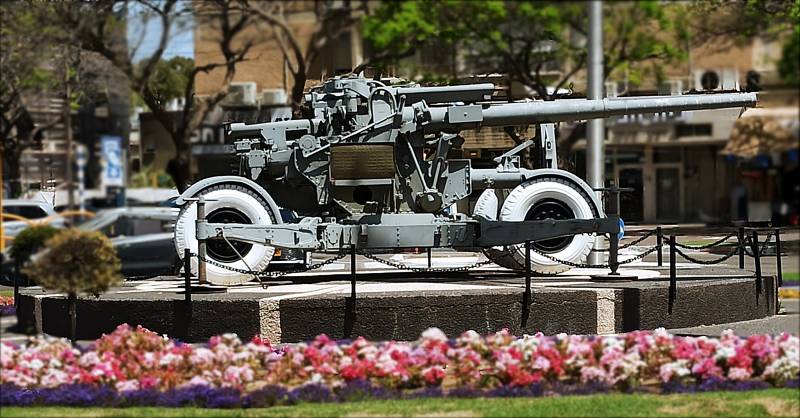
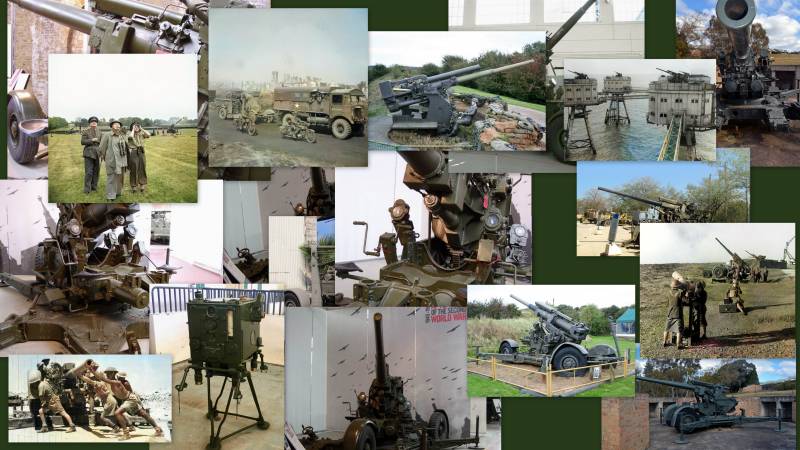
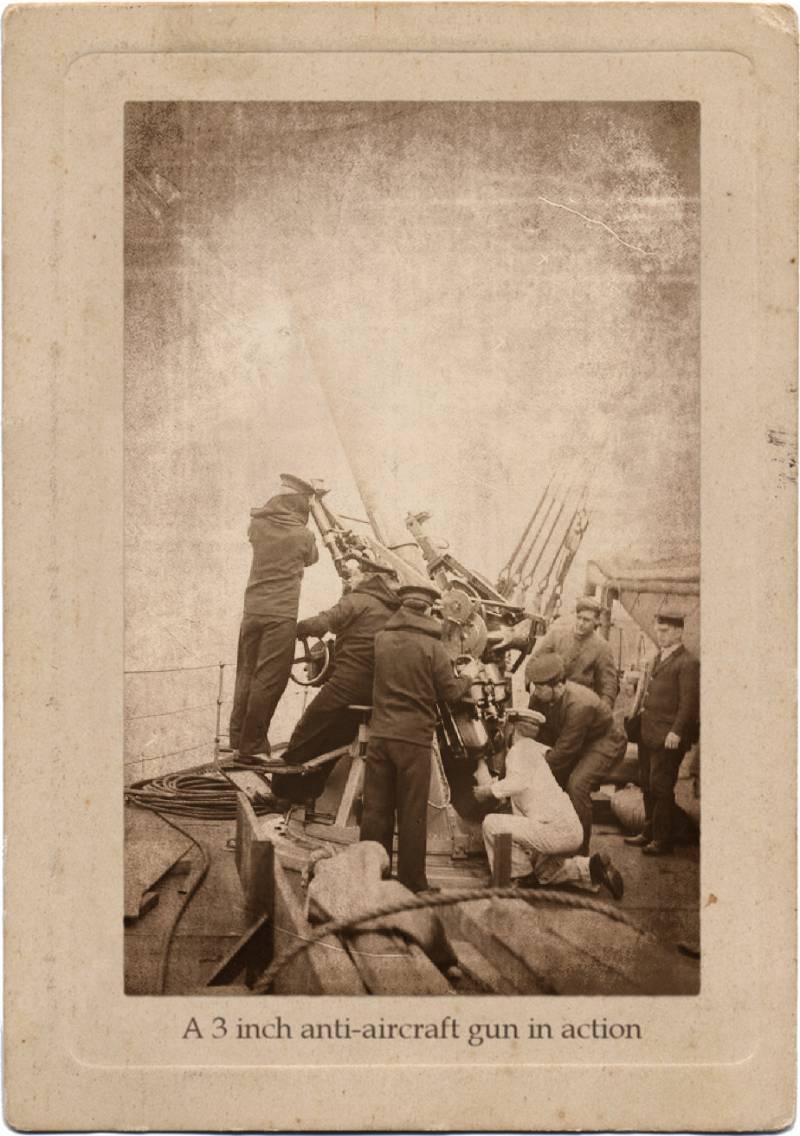
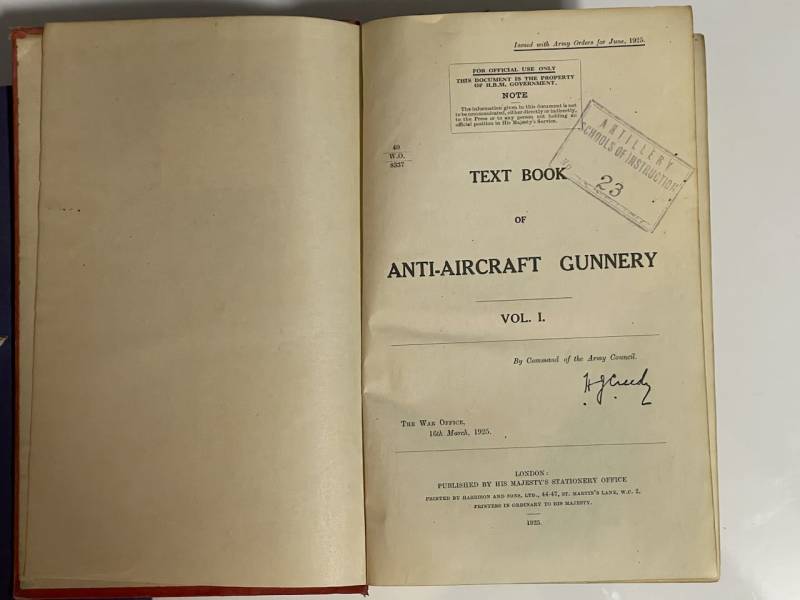
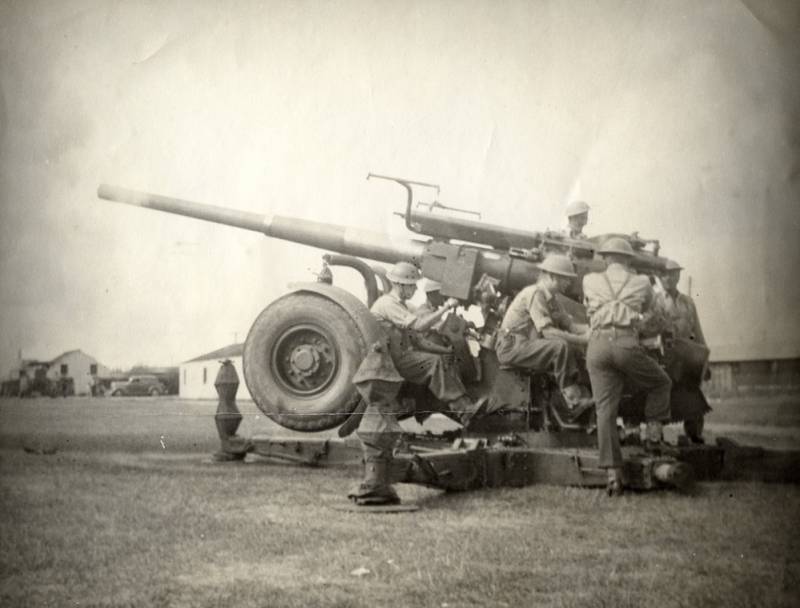
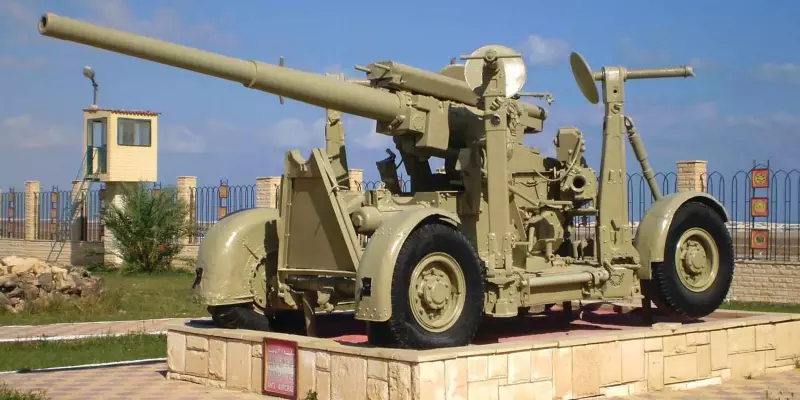


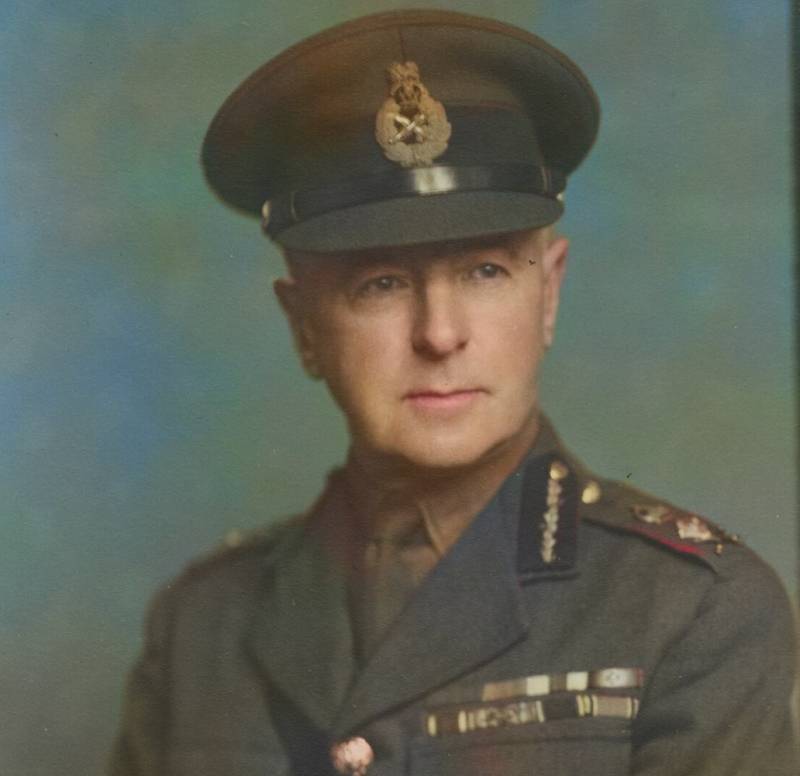
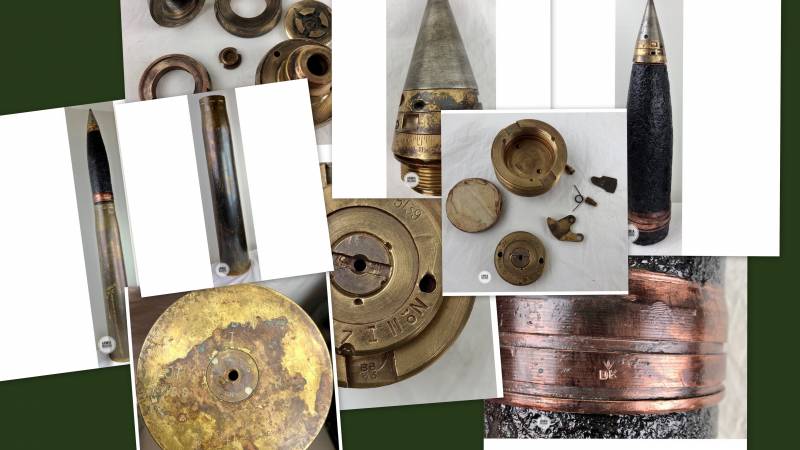
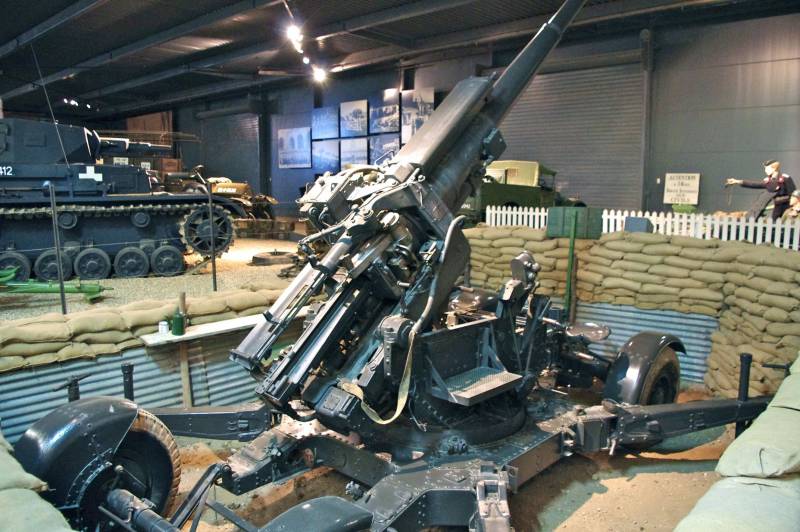
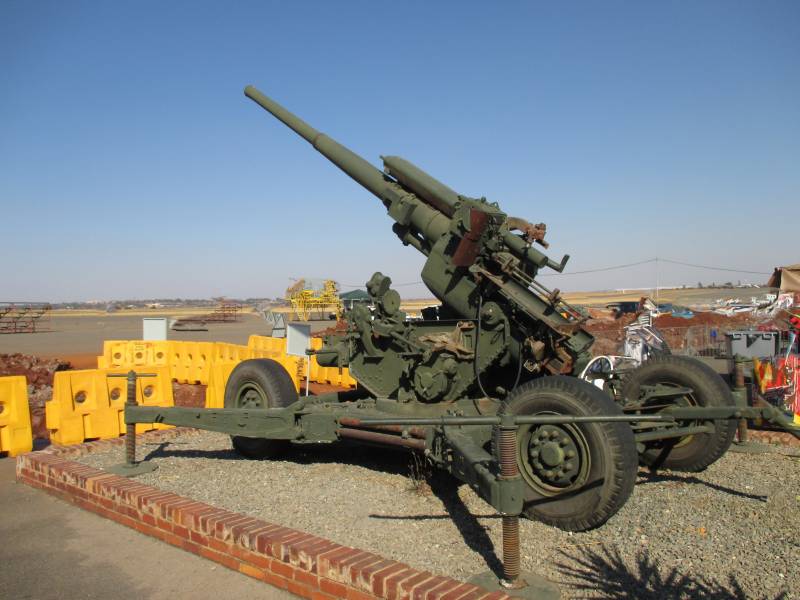
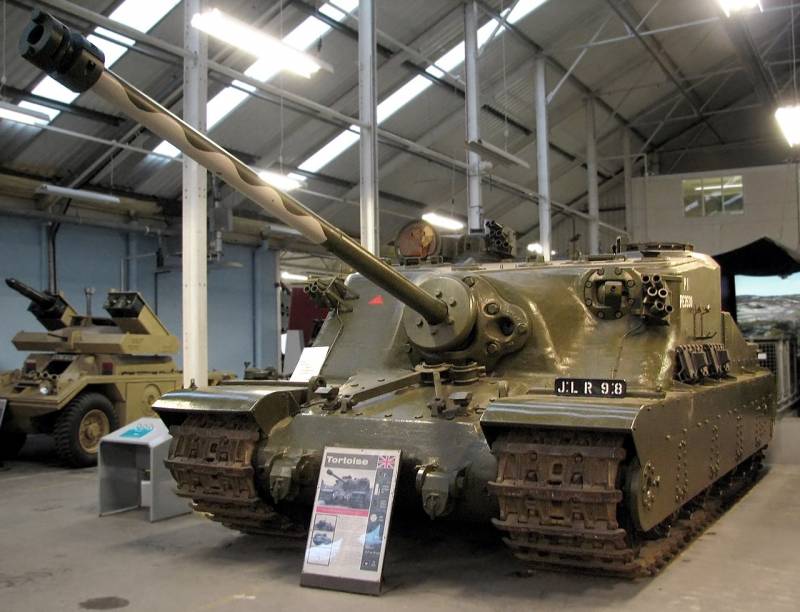
Information